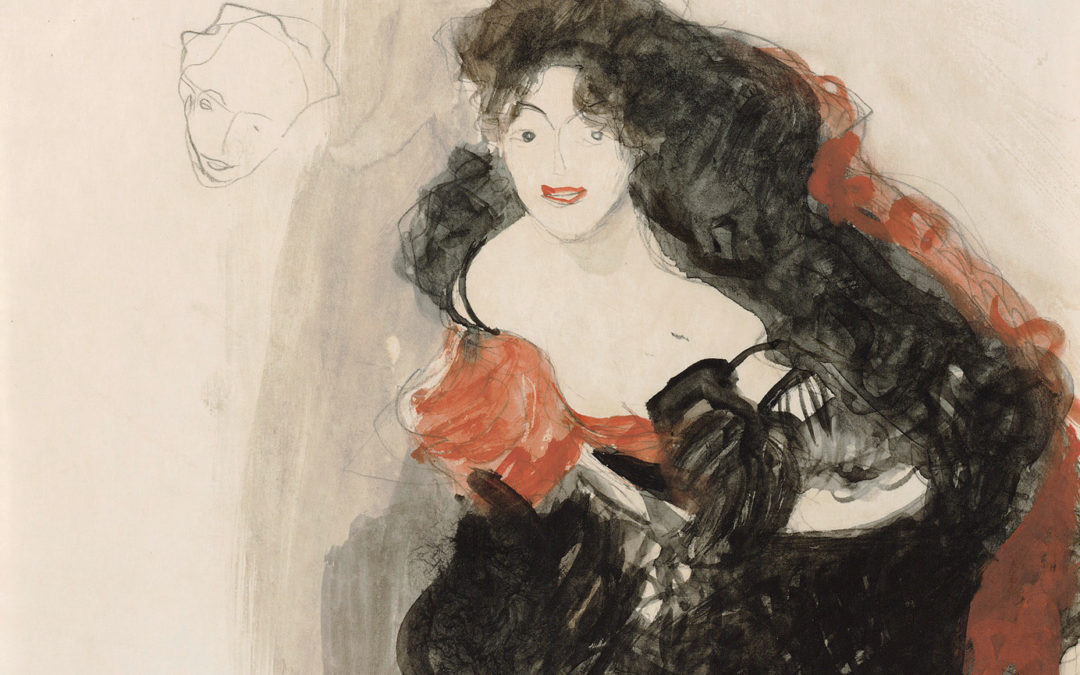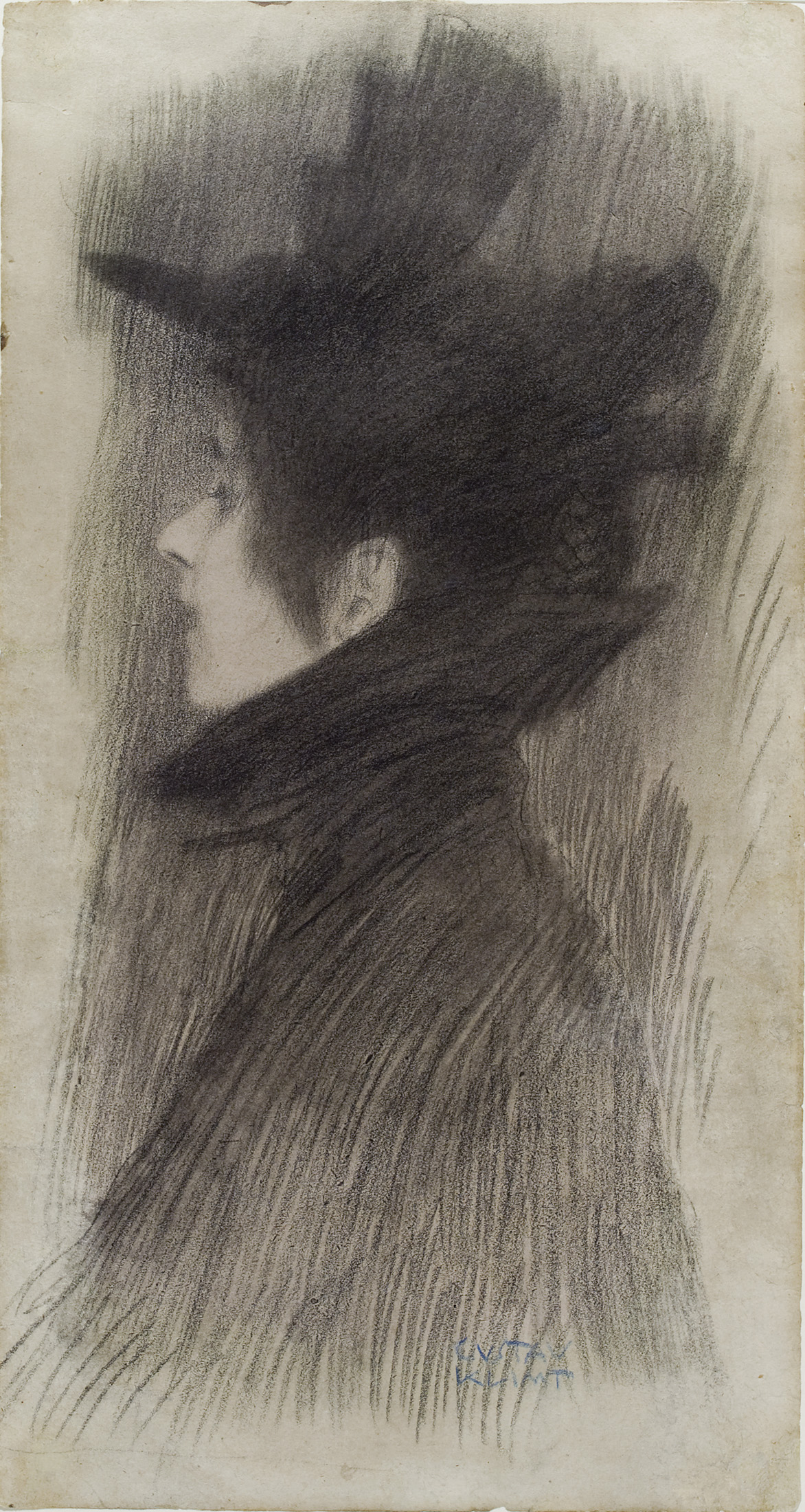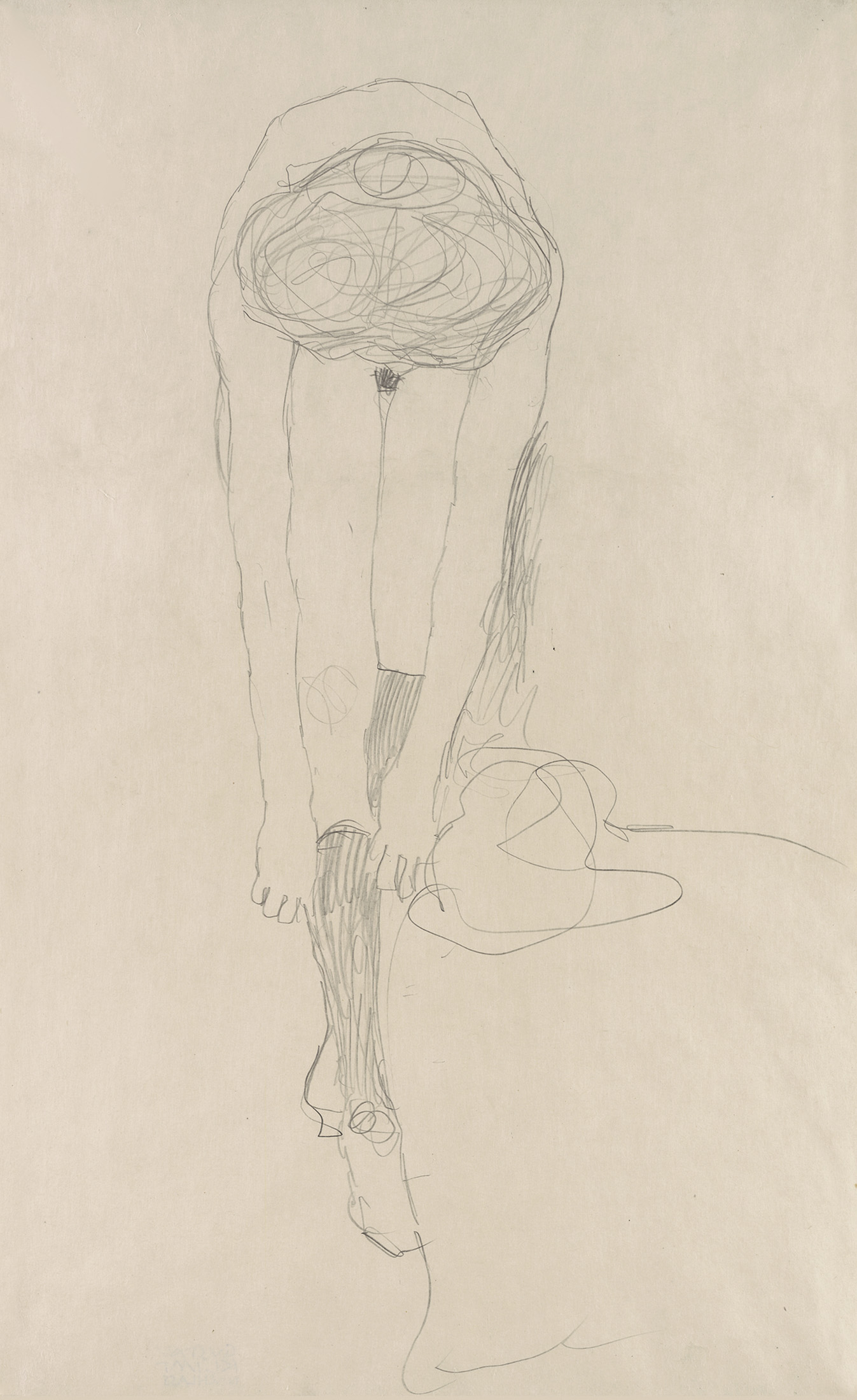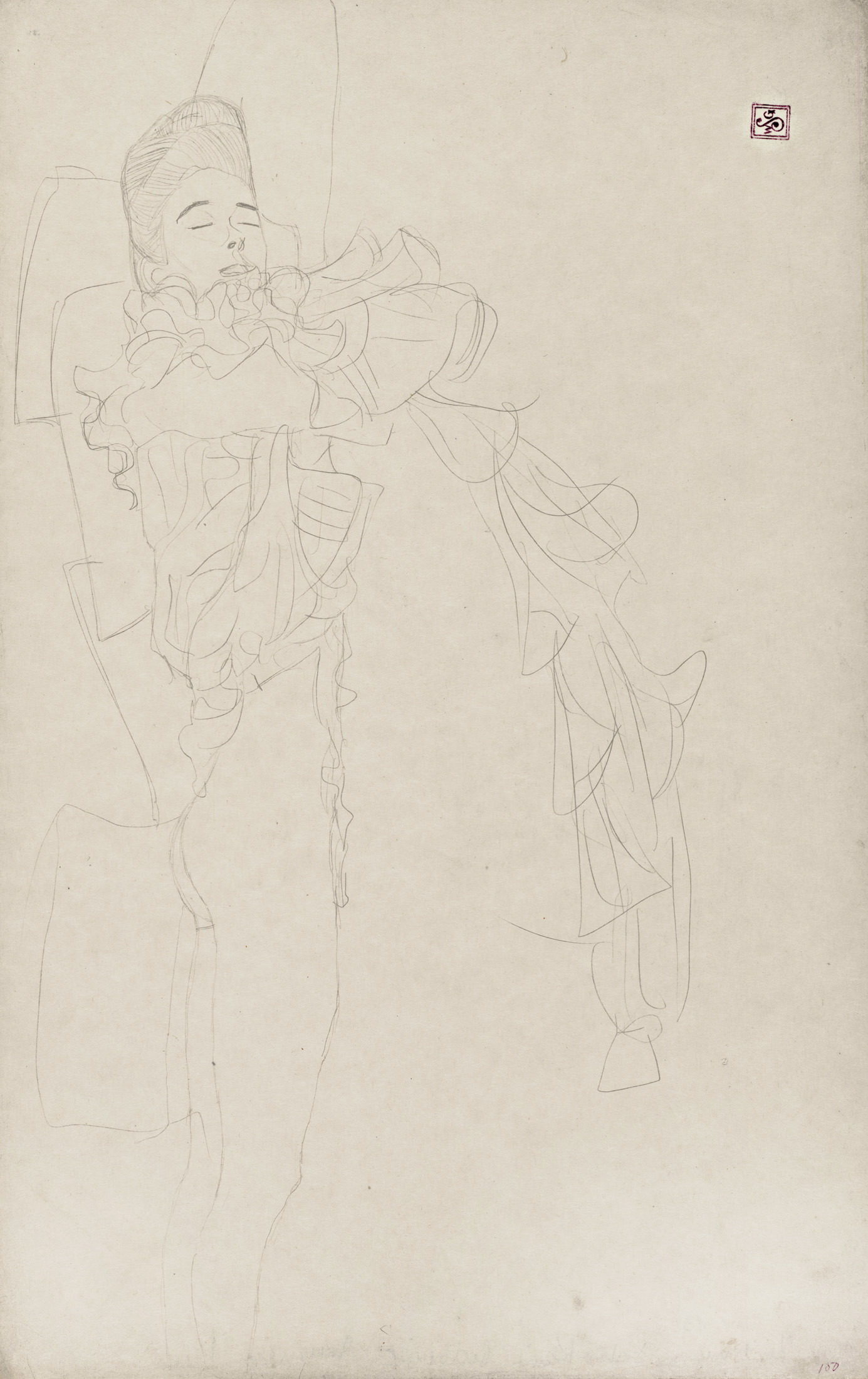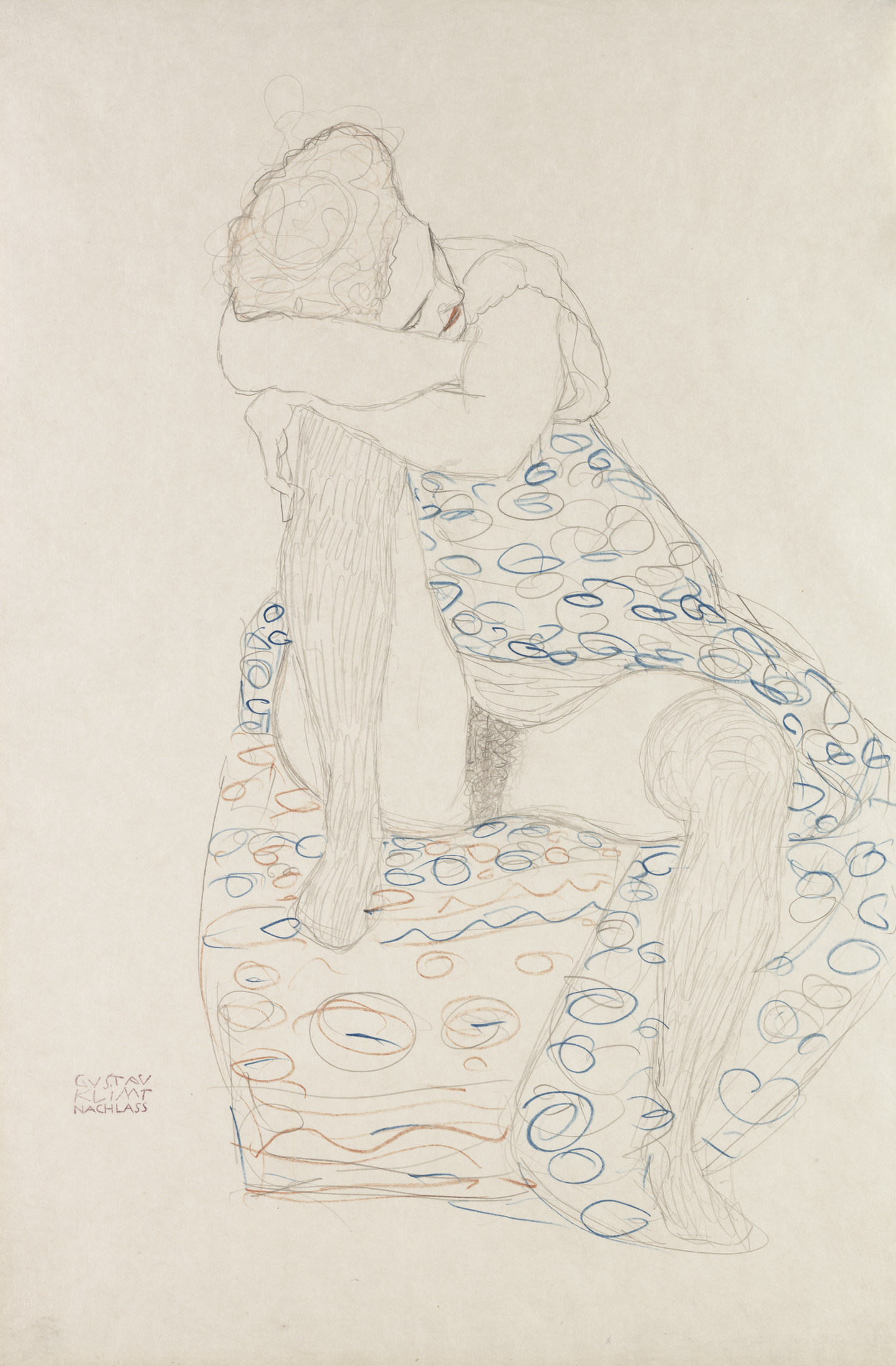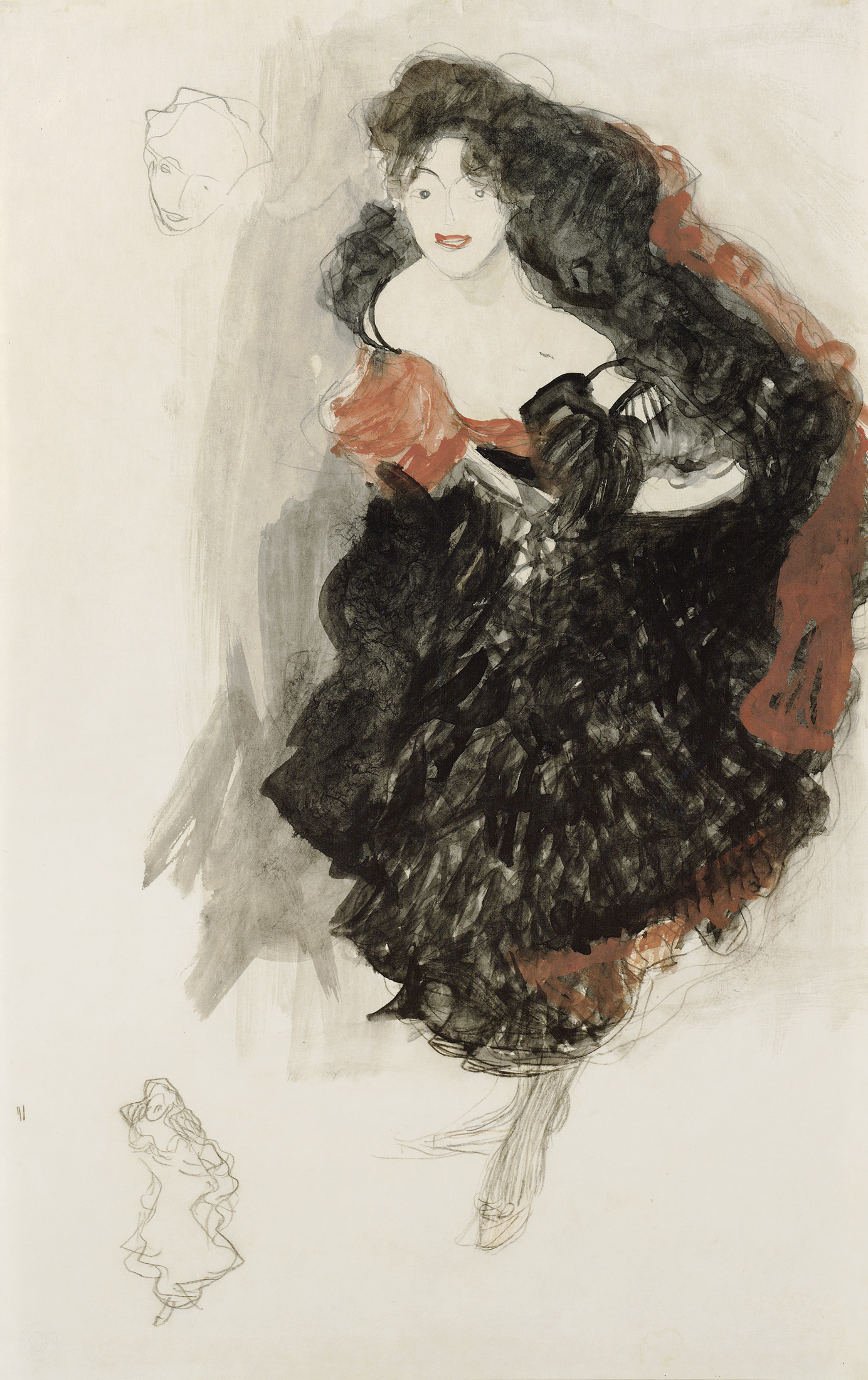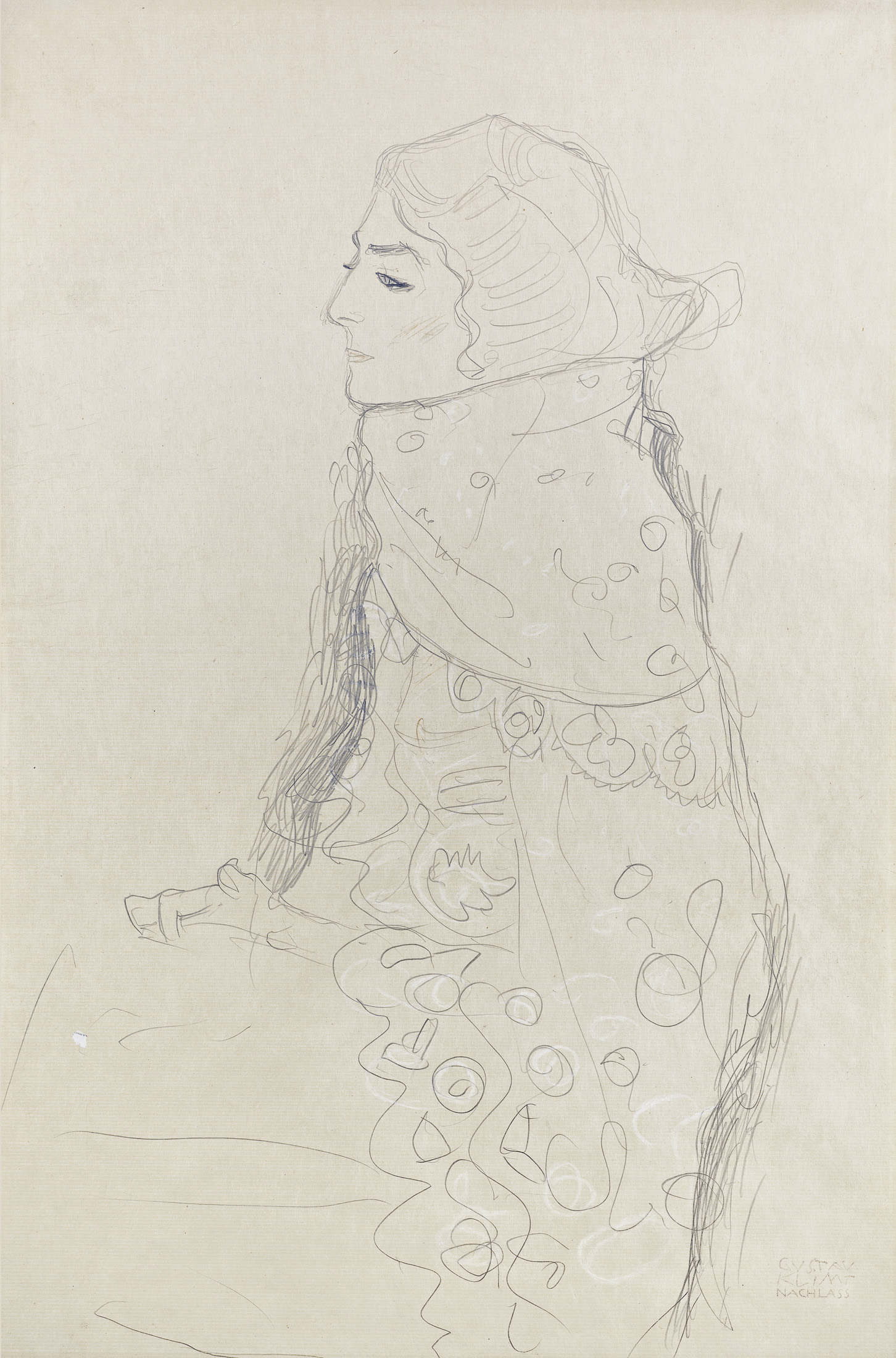Klimt’s Drawings

Klimt’s drawings have to be seen almost exclusively in connection with his paintings. Only about 4,000 – mostly sketches and a handful of watercolours – from the vast number of nude drawings that were produced in the painter’s atelier have survived until today. These have meanwhile been published in a multivolume catalogue of works. Few drawings are signed since Klimt did not intend them for public consumption. Today these floating arrangements of lines are the proud property of museums or much sought-after objects on the art market. In addition, Klimt used a large number of sketchbooks. Unfortunately, these were burnt in 1945 in a fire at the apartment of Emilie Flöge, who inherited part of the Klimt estate after his death in 1918.
Stylistically, Klimt’s drawings, like his paintings, represent the transition from historicism through Jugendstil to his first early expressionist works. The early phase of his development can be seen in his final drawings for “Allegorien und Embleme” (Allegories and Emblems) published by Martin Gerlach in 1881-1884, but also in studies for the music salon at the Palais Dumba in 1898/99. Towards the end of the 1890s, the presence of the so-called “shading style” made itself felt. Parallel lines running from top right to bottom left like “graphic rain” characterize this effective way of drawing which alternates between light and dark.
From 1904/05 on Klimt experimented with new forms and techniques. Swirling lines came to the fore, hard pencil took over from black chalk, and packing paper gave way to opalescent Japanese washi paper. From then on, he also produced many erotic female nudes. Around 1910, Klimt created several close-up half-length portraits which illustrate the psyche of the person portrayed in a very unique way.
In contrast to his paintings, Klimt’s drawings were rarely subjected to particular criticism. Only the reproach for pornography on the occasion of an exhibition at Miethke Gallery in Vienna in 1910 prompted him to exhibit almost nothing more in Austria during the last seven years of his life. The erotic nature of his drawings not only stems from the topic but is expressed by the dynamic contours of the nudes as well as by the curls and frizzles of the model’s clothes. The works from 1910 on, in particular, explain Klimt’s international fame as a draftsman. From that point, his nude drawings seem to be spiritualized, dematerialized and united with infinity.

